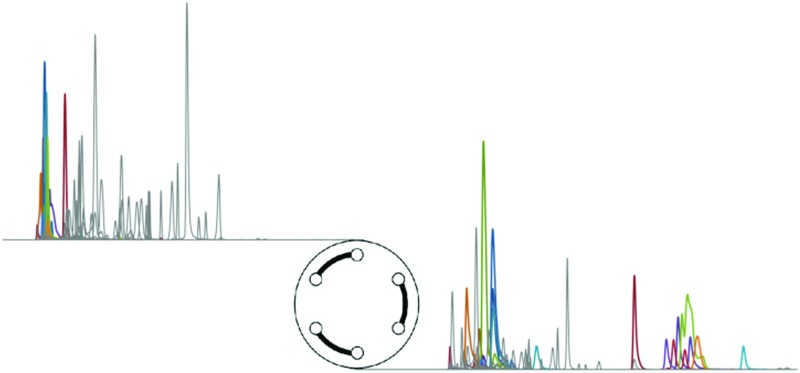- Record: found
- Abstract: found
- Article: found
Complementing reversed-phase selectivity with porous graphitized carbon to increase the metabolome coverage in an on-line two-dimensional LC-MS setup for metabolomics

Read this article at
Abstract

Abstract
Efficient and robust separation methods are indispensable in modern LC-MS based metabolomics, where high-resolution mass spectrometers are challenged by isomeric and isobaric metabolites. The optimization of chromatographic separation hence remains an invaluable tool in the comprehensive analysis of the chemically diverse intracellular metabolome. While it is widely accepted that a single method with comprehensive metabolome coverage does not exist, the potential of combining different chromatographic selectivities in two-dimensional liquid chromatography is underestimated in the field. Here, we introduce a novel separation system combining reversed-phase and porous graphitized carbon liquid chromatography in a heart-cut on-line two-dimensional setup for mass spectrometry. The proposed experimental setup can be readily implemented using standard HPLC equipment with only one additional HPLC pump and a two-position six-port valve. The method proved to be robust with excellent retention time stability (average 0.4%) even in the presence of biological matrix. Testing the presented approach on a test mixture of 82 relevant intracellular metabolites, the number of metabolites that are retained could be doubled as compared to reversed-phase liquid chromatography alone. The presented work further demonstrates how the distinct selectivity of porous graphitized carbon complements reversed-phase liquid chromatography and extends the metabolome coverage of conventional LC-MS based methods in metabolomics to biologically important, but analytically challenging compound groups such as sugar phosphates. Both metabolic profiling and metabolic fingerprinting benefit from this method's increased separation capabilities that enhance sample throughput and the biological information content of LC-MS data. An inter-platform comparison with GC- and LC-tandem MS analyses confirmed the validity of the presented two-dimensional approach in the analysis of yeast cell extracts from P. pastoris.
Related collections
Most cited references43
- Record: found
- Abstract: found
- Article: not found
Measuring the metabolome: current analytical technologies.
- Record: found
- Abstract: found
- Article: not found
Current practice of liquid chromatography-mass spectrometry in metabolomics and metabonomics.
- Record: found
- Abstract: found
- Article: not found